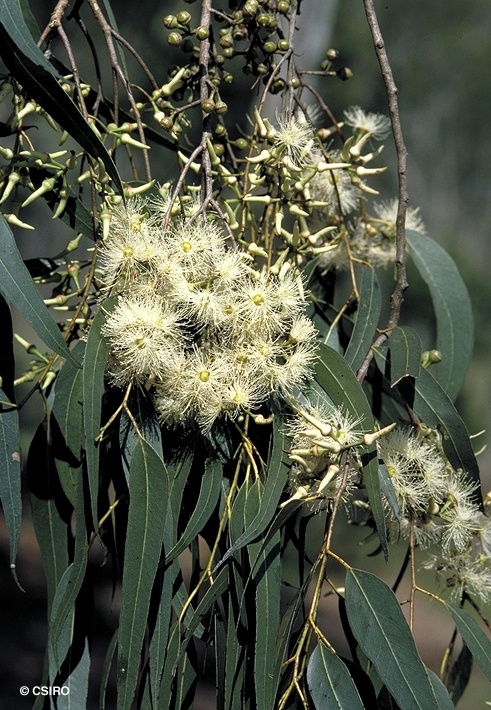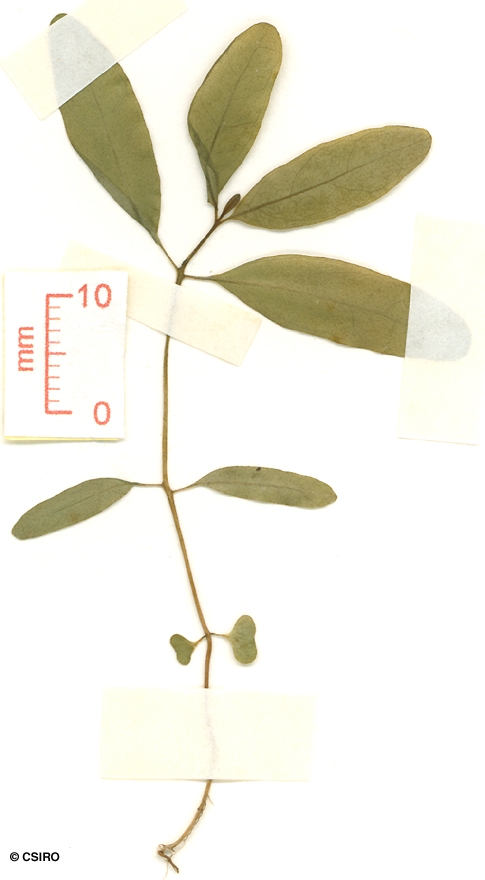Australian Tropical Rainforest Plants - Online edition
Eucalyptus tereticornis Sm. subsp. tereticornis




Brooker, M.I.H. & Kleinig, D.A. (1999), Field Guide to Eucalypts. Volume 1, South-eastern Australia Edn. 2, 1: 345, 101.
Red Gum; Bastard Box; Blue Gum; Forest Red Gum; Flooded Gum; Grey Gum; Mountain Gum; Queensland Blue Gum; Red Irongum; Slaty Gum
A tree of variable form, well formed or poorly formed often with more than one stem. Main crown branches tending to be more or less vertical. Bark smooth, pale coloured +/- blue-grey.
Leaf blades often falcate, about 9.5-18 x 1.1-2.5 cm.
Peduncles slightly flattened to almost terete. Individual flowers pedicellate. Operculum cornute, about 4-5 mm diam., much longer than the calyx tube (hypanthium). Outer operculum shed early, well before the mature bud stage.
Occurs in NEQ, CEQ and southwards to Victoria. Altitudinal range in NEQ from sea level to 1000 m. Grows in open forest, dry sclerophyll forest and sometimes on rain forest margins. Also occurs in New Guinea.
Sometimes cultivated as a street tree or in larger parks but is a major component of forestry plantations especially overseas.
Produces a useful durable timber suitable for a variety of purposes even including carving, pulley blocks and sleepers. Swain (1928).
A good firewood when dry.
Eucalyptus tereticornis Sm. (1795) Spec. Bot. New Holland 1: 41. Type: New South Wales, Port Jackson, 1793, J. White s.n.; holo: LINN; iso: BM.





